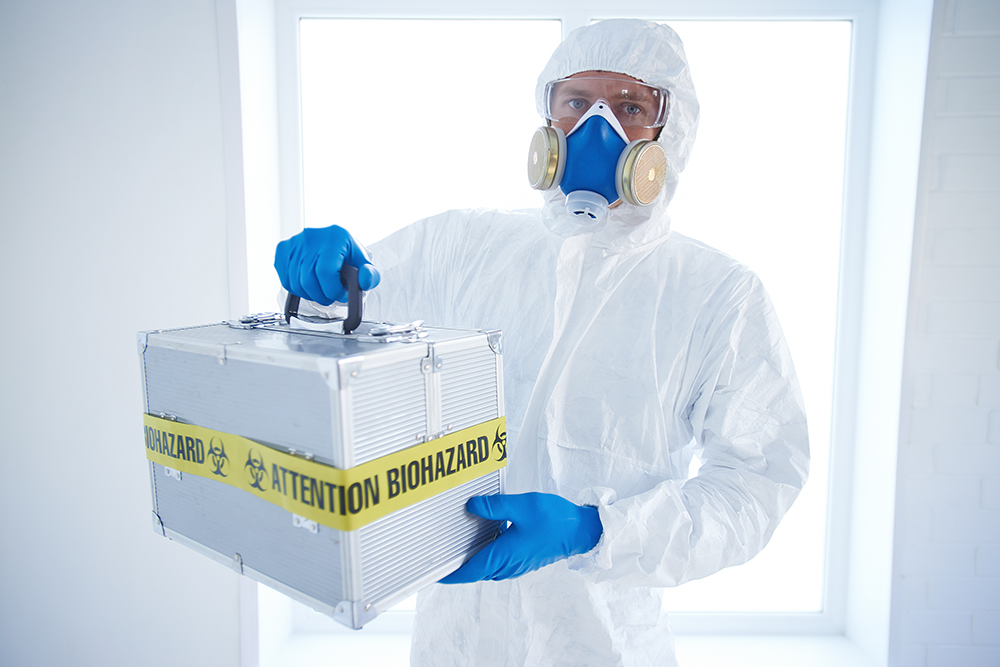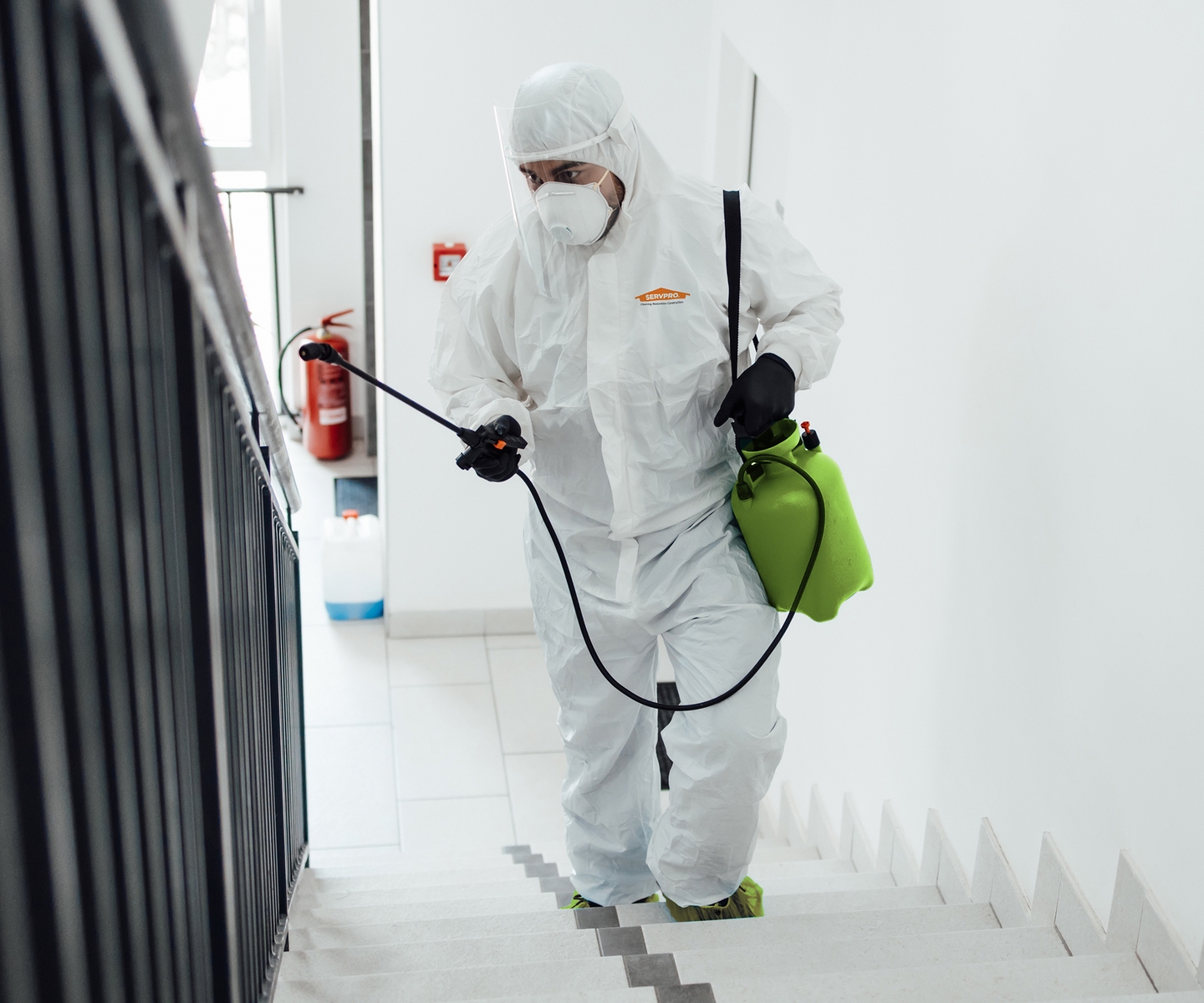Accurate ATP Testing for Effective Cleanliness and Hygiene Tracking
Accurate ATP Testing for Effective Cleanliness and Hygiene Tracking
Blog Article
Specialist Biohazard Cleaning and Decontamination for Blood, Bodily Fluids, and Hazardous Materials
The potential health and wellness risks connected with exposure to biohazards highlight the critical demand for meticulous handling and detailed clean-up. As we browse the elaborate landscape of biohazard cleaning, comprehending the subtleties of policies, conformity, and the specific equipment at play ends up being vital in ensuring a secure and extensive purification process.
Wellness Risks of Biohazard Direct Exposure
Exposure to biohazards postures considerable health dangers that can cause serious effects for people and neighborhoods alike. Biohazards encompass a large array of biological compounds, consisting of blood, bodily fluids, mold and mildew, microorganisms, viruses, and other possibly transmittable materials. When individuals enter into contact with these biohazards, whether via accidents, improper handling, or environmental direct exposure, they encounter the risk of contracting severe illnesses or illness.
One of the main health and wellness dangers related to biohazard exposure is the transmission of contagious conditions. Bloodborne virus such as HIV, liver disease B and C, and numerous microorganisms can be existing in biohazardous products, presenting a straight danger to human wellness. Breathing in air-borne biohazards like mold and mildew spores or entering call with infected surface areas can likewise cause respiratory system concerns, allergic reactions, and various other damaging wellness results.
In addition, biohazard direct exposure can have long-lasting health and wellness ramifications, with some conditions showing up years after the first contact (Blood Cleanup). Therefore, it is crucial to focus on correct biohazard cleansing and purification to alleviate these health and wellness dangers and guarantee the safety of people and areas

Specialized Educating for Biohazard Clean-up
When it concerns taking care of biohazard clean-up efficiently and securely, specialized training plays an essential role in making sure correct decontamination treatments are adhered to. Biohazard clean-up calls for particular expertise and skills to successfully mitigate dangers associated with bloodborne virus, bodily fluids, and harmful products. Professionals learnt biohazard cleaning undergo extensive guideline on how to securely take care of, remove, and throw away biohazardous materials to avoid contamination and direct exposure.
Specialized training for biohazard cleaning covers a variety of essential topics, including appropriate individual protective equipment (PPE) use, bloodborne pathogen recognition, purification strategies, and contaminated materials disposal procedures. Individuals trained in biohazard clean-up are furnished with the needed knowledge to examine contamination levels, determine prospective risks, and carry out appropriate cleanup procedures in conformity with governing criteria.
Continual training and education and learning are vital in the field of biohazard clean-up to stay updated on the latest purification modern technologies, safety and security methods, and policies. By purchasing specialized training, biohazard cleanup specialists can properly react to emergency cleanup scenarios and guard both public health and wellness and the atmosphere.
Importance of Appropriate Purification Methods
Utilizing correct purification techniques is essential in biohazard cleaning to successfully minimize and remove dangerous materials health and wellness risks. Reliable decontamination not only makes sure the elimination of noticeable traces of blood, bodily liquids, and other biohazards yet likewise targets invisible microorganisms that may position serious wellness risks otherwise correctly eradicated. By complying with strict purification methods, trained experts can considerably reduce the danger of direct exposure to harmful microbes, viruses, and bacteria that can result in infections or conditions.
Correct decontamination methods entail making use of specific tools and disinfectants that are particularly made to neutralize biohazards successfully. Comprehensive cleansing and sanitation of contaminated areas are necessary to prevent the spread of microorganisms and make certain a safe environment for passengers. In addition, the correct disposal of biohazardous waste following decontamination treatments is essential in avoiding contamination of various other surface areas or people.

Equipment and Tools for Safe Cleanup
The correct tools and devices play a crucial role in ensuring the reliable and risk-free clean-up of biohazardous materials. When handling blood, bodily liquids, or harmful products, biohazard cleaning professionals rely upon specialized equipment to decrease direct exposure dangers and completely decontaminate the affected area. Individual safety devices (PPE) such as gloves, goggles, coveralls, and masks are crucial to secure against direct call with possibly contagious materials. In addition, biohazard cleaning sets having anti-bacterials, absorbent materials, and biohazard bags are pop over here made use of to safely get rid of and include of infected products. Blood Cleanup.
Advanced cleaning devices like hospital-grade anti-bacterials, HEPA-filtered vacuums, and misting machines are utilized to disinfect surfaces and eliminate biohazards effectively. Specialized devices such as sharps containers and biohazard garbage disposal bins are used to securely take care of sharp objects and biohazardous waste materials. By making use of the right equipment and devices, biohazard cleansing professionals can make certain a detailed cleanup procedure that focuses on safety and reduces wellness risks for both workers and residents of the afflicted room.
Rules and Conformity in Biohazard Cleaning
Proper adherence to policies and compliance requirements is extremely important in biohazard cleansing to ensure the safety of both personnel and the atmosphere. Government companies such as OSHA (Occupational Security and Wellness Administration) and the EPA (Environmental Protection Firm) have actually developed specific guidelines for biohazard clean-up treatments to decrease health threats and environmental contamination. These guidelines cover a variety of aspects including the handling, transportation, and disposal of biohazardous materials, along with the essential training and safety tools needed for workers associated with the clean-up process.
Biohazard cleaning companies must stay current with these guidelines to ensure that their operations meet the called for safety and security requirements. Failure to follow these policies can result in severe effects, consisting of fines, legal activity, and threatening the health and wellness of individuals and the see here environment. By adhering to rigid policies and compliance actions, biohazard cleansing companies can effectively minimize dangers and ensure a extensive and safe cleanup procedure for all celebrations involved.
Verdict
To conclude, biohazard cleaning and purification need specialized training, correct methods, and adherence to laws. Direct exposure to blood, bodily liquids, and harmful materials postures considerable wellness dangers, making it essential to use the ideal devices and devices for secure clean-up. By following rigorous procedures and guidelines, specialists can efficiently click resources minimize the risks connected with biohazard direct exposure and guarantee the safety and security of both themselves and others.
As we navigate the detailed landscape of biohazard cleanup, recognizing the nuances of regulations, compliance, and the specialized devices at play comes to be critical in making sure a extensive and secure decontamination process. (Blood Cleanup)
When it comes to managing biohazard cleanup effectively and securely, specialized training plays a basic duty in guaranteeing appropriate purification treatments are followed.Using correct purification strategies is important in biohazard clean-up to successfully minimize and get rid of dangerous materials wellness risks. Additionally, biohazard cleaning sets including disinfectants, absorbing products, and biohazard bags are utilized to securely dispose and contain of contaminated products.
Government agencies such as OSHA (Occupational Safety and Wellness Management) and the EPA (Environmental Defense Company) have established details standards for biohazard clean-up procedures to minimize wellness dangers and environmental contamination.
Report this page